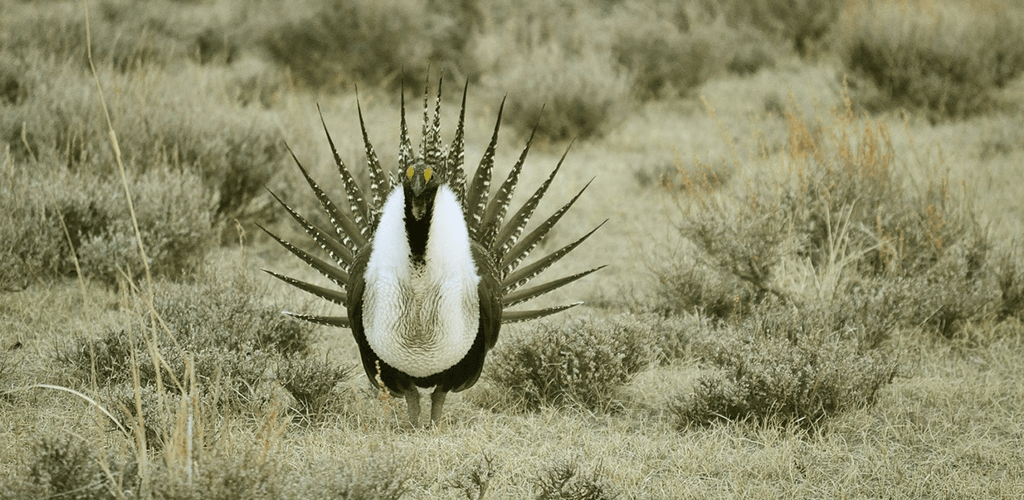We have much more to do and your continued support is needed now more than ever.
Saving the Sagebrush Sea Is No Threat to Security

You might send a jackrabbit speeding off while scouting mule deer, learn about hunting from a coyote crisscrossing the adjacent hillside, or flush out a short-eared owl while walking along a grassier stretch in pursuit of pheasants.

These unexpected encounters not only liven up the hunt, but tell us a little something about the landscape we are walking – including its health.
Hunters have gone to great lengths to keep these sagebrush systems healthy and full of wildlife, especially the greater sage-grouse, whose well-being is considered an important indicator for general ecosystem health. It feels like déjà vu, but a provision in the National Defense Authorization Act (NDAA) has once again been inserted to block federal land-use plans designed to protect the sage-grouse and sagebrush habitat across eleven Western states.
These plans were developed collaboratively by the Department of the Interior, the states, hunters, environmental groups, ranchers, scientists, and the oil and gas industry. Blocking them would derail years of discussion, planning, and on-the-ground action to protect the sage-grouse and conserve its habitat.
Take ActionThis provision is in the House of Representatives’ version of the NDAA, and would also prevent the sage-grouse from being listed under the Endangered Species Act for the next decade. This is an action that would practically guarantee further losses to the greater sage-grouse population, and to the greater sagebrush ecosystem by first blocking plans intended to help save the species, and then removing the only other available mechanism to help the species and ecosystem rebound.
This cannot be allowed to happen. A defense funding bill should not decide the future of the sage-grouse and the entire sagebrush ecosystem. The potential cost is too high, and the rationale is wrong – taking moderate steps to save a bird in need is simply not a threat to our nation’s security.
The ultimate indicator of a healthy sagebrush system is the greater sage grouse – a big bird weighing up to five pounds, which has declined from many millions to a few hundred thousand, as its habitat has been degraded and destroyed by development. So, it’s no surprise that I have never run into one while out hunting or hiking.
Members of Congress who claim that a five-pound bird threatens defense readiness are taking advantage of an important piece of legislation that shouldn’t be weighed down by conservation issues. Similarly, conserving the sagebrush sea, along with the hundreds of wildlife species that depend upon its continued health, is too important of an issue to be treated as a political trading card. Let’s stop diverting time and attention away from the truth: that both defense and wildlife conservation are crucial issues that shouldn’t be lumped together to facilitate political posturing.
Take Action



















